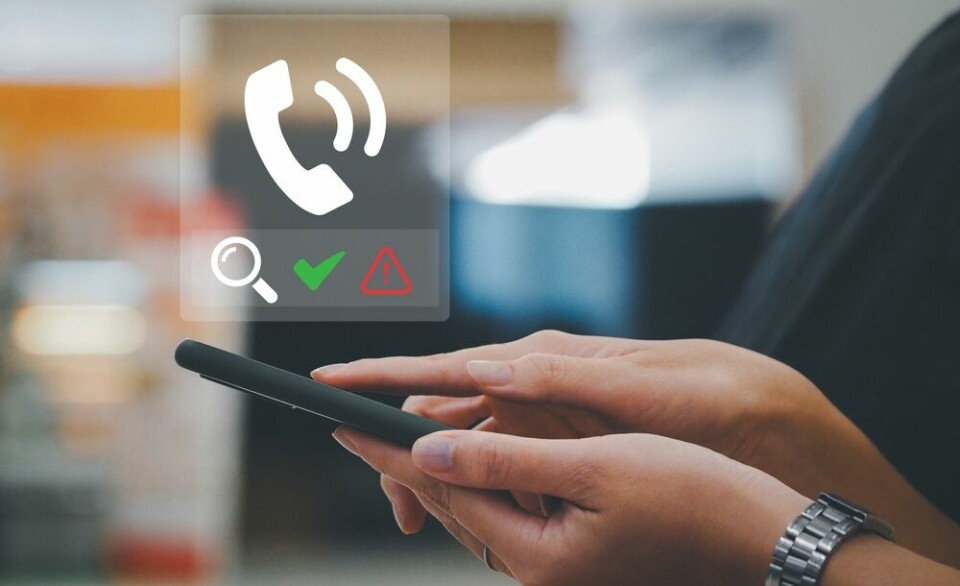-
Cars and driving: What's new in France in 2026
Including the new pollution tax on used cars, motorway toll changes and speed camera changes
-
More than a quarter of new car registrations in France are electric
EV sales hit new record in November 2025
-
Ryanair’s presence confirmed at Tours-Val de Loire airport
Bookings for summer flights to Marseille and Morocco are already open
French hospital shares homemade mask instructions
A French hospital has published instructions on how to make homemade face masks that can be worn outside the home, as many people may have no symptoms but could spread the virus unknowingly.

Update: We have since been informed that the pattern published by the CHU Grenoble-Alpes is in fact a translation of an original published on the website CraftPassion.com. This original post and full mask instructions (in English) are here.
------------
The university hospital (CHU) of Grenoble-Alpes (Auvergne-Rhône-Alpes) published a PDF with instructions on how to make a homemade face mask - as well as a template of various sizes - here.
Wearing a mask is unlikely to stop you getting ill yourself if you encounter someone else who is infected. However, it may stop you from spreading the virus to others, even if you have no symptoms.
Wearing a mask is not enough to stop the spread itself.
Wearers are also advised to practice the usual good hygiene methods, such as coughing into your elbow rather than your hand; using hand sanitiser gel; not touching your face; staying within 1-2 metres of others; and washing your hands for 20 seconds with soap and water.
People are advised to wear a mask when leaving the house, even if they have no symptoms, as a large number of carriers of the virus may be asymptomatic, or have only mild signs. They may not realise that they are a carrier, and could spread the virus to others without knowing.
Studies have shown that homemade masks are not as effective as surgical masks, or the gold-standard FFP2 models, but can be useful nonetheless.
What size should my mask be?
It should cover the wearer’s mouth and the bottom of their nose, to avoid spreading contaminated droplets as much as possible.
A template of different sizes can be printed from the PDF by the Grenoble-Alpes CHU here.
The CHU template page shows half of one mask, with different sizes - from a small child aged 3-6, to an adult man. Cut it out twice and sew together in the middle to make a full mask (full instructions below).
(Photo: Infirmiers.com / CHU Grenoble-Alpes)
What can I use to make my mask?
Thick materials such as clean hoover bags or tea towels are better than thin material such as cotton T-shirts or linen, as the latter do not have tight enough weaves.
If possible, the advice is to use three layers of material; a thinner layer and a thicker outside layer, with a vacuum cleaner bag or thick fleece in between.
When should I wear it?
Place it on your face just before you go out, after having washed your hands. Only take it off after you come inside, and wash your hands, and the mask, afterwards.
How long does the mask last for?
Any kind of mask requires regular changing, as it quickly becomes moist and contaminated through use.
A homemade mask should only be worn for the duration of your trip, such as a quick visit to the supermarket. It will not remain very effective beyond this.
Can I reuse the same mask?
You can, but it must be taken off after use and thoroughly cleaned with soap and hot water, and left to dry completely before reuse.
Full instructions:
The full instructions for making a mask are here (in French), and translated below. (Translated by Connexion).
The PDF also has photos to help demonstrate the steps.
(Photo: Infirmiers.com / CHU Grenoble-Alpes)
Si ça peut aider les couturiers amateurs, voici l'étape 7 en image :
— Marie Comet (@CometMarie) March 21, 2020
1. La doublure à l'envers, l'extérieur à l'endroit : on insère l'intérieur dans la doublure.
2. Vue de l'intérieur.
3. On dépose le molleton sur l'extérieur de chaque face (1 dessus, 1 dessous), et on assemble pic.twitter.com/PC1vezodfP
250 million masks
Late last week, health minister Olivier Véran confirmed that France had ordered 250 million masks, mainly for healthcare staff.
Mask priority will be given to health workers, staff in elderly care homes, police, and distribution workers.
These will be delivered gradually over the course of the next few weeks, the minister said, not counting extra supplies of masks set to be delivered by large businesses.
The current national stock of masks is at 86 million, including five million FFP2 (most protective), and the rest surgical standard.
France can produce six million masks per week, Mr Véran said, rising to eight million from April.
Currently, FFP2 masks are illegal to sell - even in pharmacies - and must only be used by health professionals or other at-risk groups.
Read more: Covid-19 France: Macron talks of ‘war’ as 112 more die
Read more: Covid-19 France: Theft and illegal sale of masks soar
Stay informed:
Sign up to our free weekly e-newsletter
Subscribe to access all our online articles and receive our printed monthly newspaper The Connexion at your home. News analysis, features and practical help for English-speakers in France
























